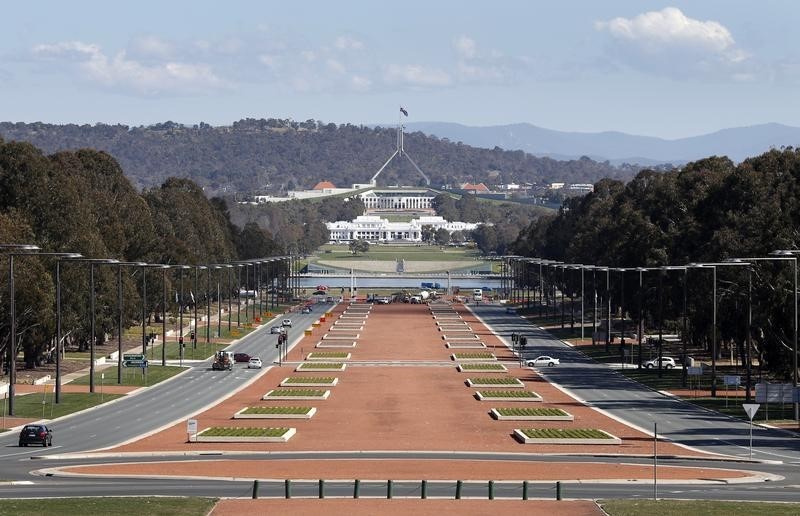(Bloomberg) -- Australia’s economy is set for a fiscal injection as a government trailing in opinion polls ahead of a May election tries to buy its way back into contention and the opposition seeks to hang onto its lead.
The expected spending bonanza in the April 2 budget will be well received by the nation’s heavily indebted households. It may also win favor in a more unlikely quarter: the traditionally buttoned-down, inflation-fighting Reserve Bank of Australia, which is keen to avoid resuming interest-rate cuts.
RBA Governor Philip Lowe is under intensifying pressure to end a 2-1/2 year pause as tumbling house prices spook households and slow economic growth. But with rates already at a record low, the impact of further easing might prove limited. In contrast, well-directed tax cuts and cash disbursements could be just the stimulus the economy requires.
“Fiscal easing is what we’d expect,” said Sally Auld, a senior strategist for interest rates at JPMorgan Chase & Co (NYSE:JPM). in Sydney. “Lowe would also have a preference for fiscal, given he’s spoken repeatedly about how monetary policy can only do so much, that it doesn’t have the answers to all the problems.”
She nonetheless predicts the central bank will end up cutting rates twice this year because between an election, drawing up legislation and then passing it through a Senate the government doesn’t control, the cash wouldn’t hit the economy until late this year. That might be too late to arrest the momentum of the slowdown.
Growth Slowdown
While hiring is strong, unemployment has fallen to 5 percent and firms are continuing to plan spending, economic growth decelerated to about 1 percent in the second half of last year from almost 4 percent in the first.
Sydney house prices have tumbled more than 13 percent from their peak, prompting a sharp slowdown in residential construction; and wage stagnation and subdued inflation show little sign of lifting. The biggest concern is the drop-off in consumption, which accounts for almost 60 percent of gross domestic product.
With rates already at 1.5 percent, parliament might be better placed to respond.
The government has legislated some income-tax cuts and said in its mid-year fiscal and economic outlook it has about 0.5 percent of GDP penciled in for “decisions taken but not yet announced” -- widely regarded as a nod to further giveaways.
Policy Lever
The main opposition Labor party is pledging to scrap tax concessions that it says are skewed toward the wealthy, freeing up money to deliver tax cuts and rebates for low and middle-income earners that may inject more stimulus into the economy.
Michael Blythe, chief economist at Commonwealth Bank of Australia, expects the RBA to keep standing pat and says the government should step in.
“Fiscal policy redistributes income around the economy,” he said. “Use that policy lever to give some money to households, who we know represent the biggest downside risk to the economy.”
Regardless of fiscal action, it may prove difficult for the RBA to resist a rate cut, according to Auld, who says the economy is experiencing “a cyclical shortfall” in domestic demand.
“At some point Lowe will sit there and say to himself: do I really want to be the guy, in six months’ time, where everyone points the finger at me and says, ‘you sat there and did nothing when blind Freddy could’ve told you that things are going south,”’ she said. “He doesn’t want to be that person.”
